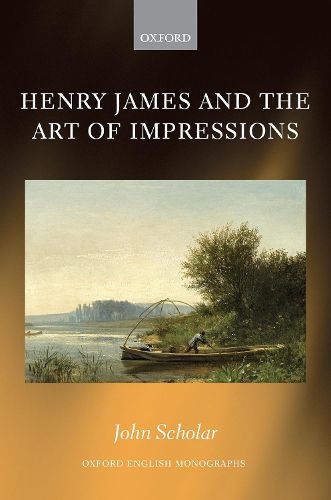Readings Newsletter
Become a Readings Member to make your shopping experience even easier.
Sign in or sign up for free!
You’re not far away from qualifying for FREE standard shipping within Australia
You’ve qualified for FREE standard shipping within Australia
The cart is loading…






Henry James criticized the impressionism that was revolutionizing French painting and fiction. He satirized the British aesthetic movement whose keystone was impressionist criticism. So why, time and again in important parts of his literary work, did James use the word ‘impression’? Henry James and the Art of Impressions argues that James tried to wrest the impression from the impressionists and to recast it in his own art of the novel. Interdisciplinary in its range, philosophical and literary in its focus, the book shows the place of James’s work within the wider cultural history of impressionism. It draws on painting, philosophy, psychology, literature, and critical theory to examine James’s art criticism, early literary criticism, travel writing, reflections on his own fiction, and the three great novels of his major phase, The Ambassadors, The Wings of the Dove, and The Golden Bowl. It shows how the language of impressions enables James to represent the most intense moments of consciousness of his characters. It argues that the Jamesian impression is best understood as a family of related ideas bound together by James’s attempt to reconcile the novel’s value as a mimetic form with its value as a transformative creative activity.
$9.00 standard shipping within Australia
FREE standard shipping within Australia for orders over $100.00
Express & International shipping calculated at checkout
Henry James criticized the impressionism that was revolutionizing French painting and fiction. He satirized the British aesthetic movement whose keystone was impressionist criticism. So why, time and again in important parts of his literary work, did James use the word ‘impression’? Henry James and the Art of Impressions argues that James tried to wrest the impression from the impressionists and to recast it in his own art of the novel. Interdisciplinary in its range, philosophical and literary in its focus, the book shows the place of James’s work within the wider cultural history of impressionism. It draws on painting, philosophy, psychology, literature, and critical theory to examine James’s art criticism, early literary criticism, travel writing, reflections on his own fiction, and the three great novels of his major phase, The Ambassadors, The Wings of the Dove, and The Golden Bowl. It shows how the language of impressions enables James to represent the most intense moments of consciousness of his characters. It argues that the Jamesian impression is best understood as a family of related ideas bound together by James’s attempt to reconcile the novel’s value as a mimetic form with its value as a transformative creative activity.